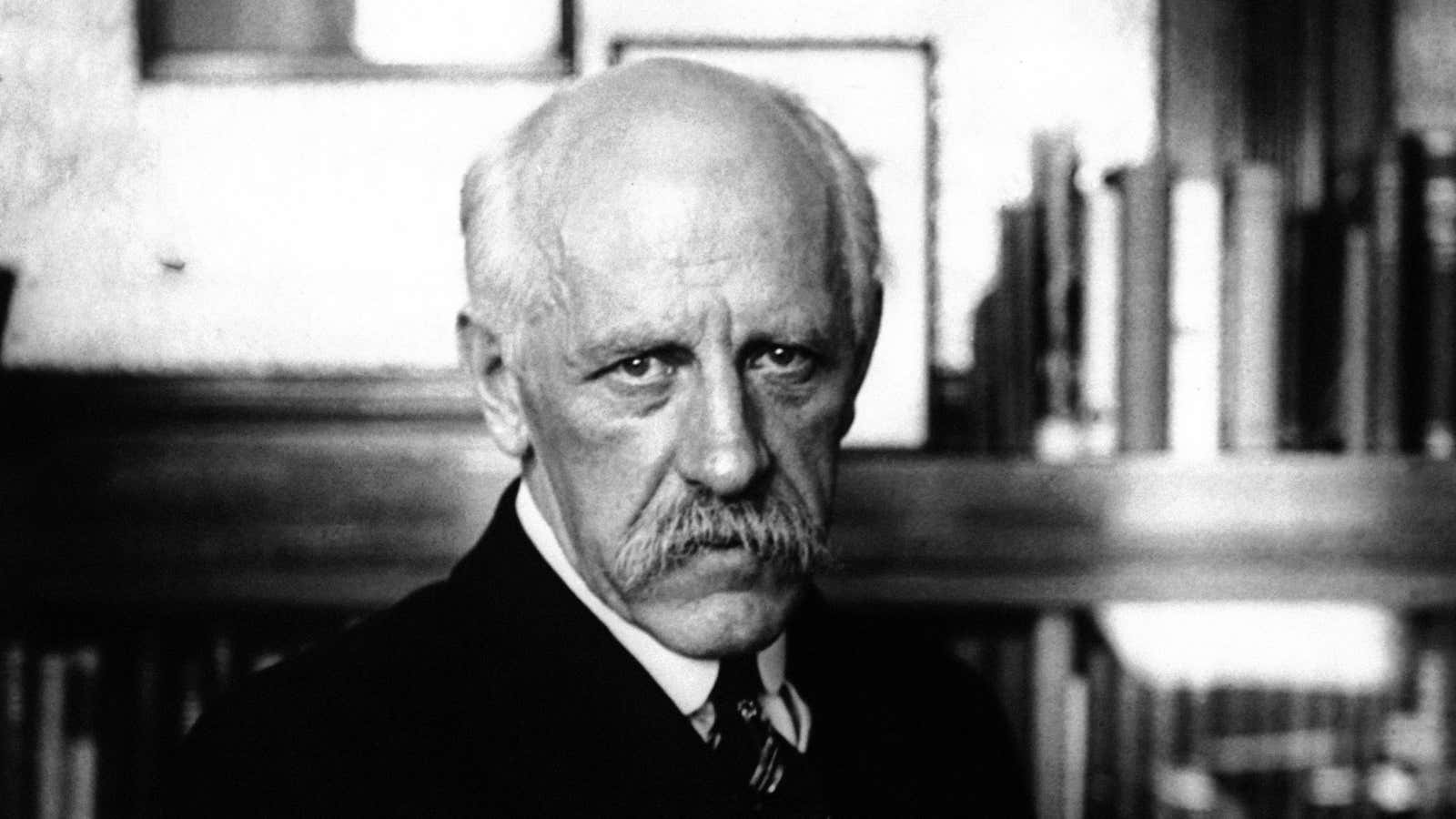A man known for exploring vast uncharted territories was the unlikely creator of a document that first allowed great numbers of stateless people to travel across international borders.
Today, in honor of his 156th birthday, the Google doodle is a celebration of Fridtjof Nansen—scientist, champion skier, Arctic explorer, oceanographer, and humanitarian.
One of Norway’s most celebrated historical figures, Nansen spent the later half of his career passionately advocating for the rights of displaced peoples, work for which he was honored with the Nobel Peace Prize. His legacy is still felt in today’s world, where the plight of refugees remains a fraught issue.
Who was Fridtjof Nansen?
Fridtjof Nansen’s was a champion skier and ice skater in his youth. He went on to study zoology and earned a doctorate through his research on the nervous systems of lower marine vertebrates, which helped establish many modern theories of neurology. His passion for biology and cross-country skiing led him to become an explorer.
“I demolish the bridges behind me…Then there is no choice but to move forward,” Nansen once said.
He led the team that first traveled across Greenland in 1888 and tried to become the first man to reach the North Pole during a 1893-96 northern expedition. He didn’t reach the pole, but made it to 86°14′ north latitude, farther than anyone else had at that time.
Fearless explorer to fearsome diplomat
After returning from the Arctic a national hero, Nansen’s interests turned back to his own country. He successfully advocated for Norway’s independence from Sweden and became Norway’s ambassador in London in 1908. After negotiating the relaxation of an Allied blockade that halted the shipment of vital supplies into Europe during World War I, he was named president of the Norwegian Union for the League of Nations in 1919. At the League’s request, Nansen accepted the position of high commissioner of refugees and helped repatriate almost half a million prisoners of war between 1920 and 1921.
Nansen also directed millions in Red Cross aid to post-revolutionary Russia, which some historians say could have helped save the lives of as many as 22 million.
The Nansen passport
For all his accomplishments, Nansen’s most significant is likely the creation of the Nansen Passport in 1922, a travel document for stateless people that was recognized by over 50 countries and allowed refugees to travel safely across borders.
Tasked with resettling millions of Russian refugees displaced by the Russian Revolution and dying of famine, Nansen ran into a major problem: Most refugees didn’t have any proof of identity or nationality. He created the Nansen passport to solve the issue.
The Nansen passport was originally conceived for Russian refugees, but many other displaced peoples used the identity document between 1922 and 1938, including refugees of the Greco-Turkish wars. The artist Marc Chagall, composer Igor Stavinsky, writer Vladimir Nabokov, and dancer Anna Pavlova were all notable Nansen passport holders.
Nansen won the 1922 Nobel Peace Prize for ”his work for the repatriation of the prisoners of war, his work for the Russian refugees, his work to bring succor to the millions of Russians afflicted by famine, and finally his present work for the refugees in Asia Minor and Thrace.”
A humanitarian legacy
After his death in 1930, the League established the Nansen International Offices for Refugees to carry on his work. Following in Nansen’s path, the eponymous office received the Nobel Peace Prize in 1938.
Nansen passports, no longer used, directly led to the United Nations’ policy of issuing travel documents for refugees and other stateless people.
It was Nansen’s extraordinary vision and leadership that convinced global leaders following WWI that the free movement of refugees was fundamental to the establishment of a safe, stable international community. As the plight of global refugees in Europe continues to spark conflict between nations, it’s crucial that today’s leaders see the crisis as Nansen did, a humanitarian issue, rather than a political one.
